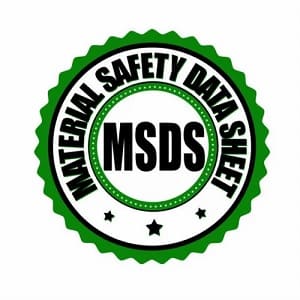Material Safety Data Sheet (MSDS)
₹16,000.00 Original price was: ₹16,000.00.₹8,000.00Current price is: ₹8,000.00.
Category: MSDS Certification
Tag: MSDS
A Material Safety Data Sheet (MSDS), now commonly referred to as a Safety Data Sheet (SDS), is a document that provides information about the potential hazards and safe handling procedures for chemicals, substances, or mixtures used in various workplaces. It typically includes information such as:
1. **Product Identification:** Name of the substance or mixture, manufacturer or supplier information, product code or number.
2. **Hazards Identification:** Information on the potential hazards associated with the substance, including any physical, health, or environmental hazards.
3. **Composition/Ingredients:** List of ingredients in the product, including their chemical names, concentrations, and any impurities.
4. **First Aid Measures:** Instructions on appropriate first aid procedures in case of exposure, such as inhalation, ingestion, or skin/eye contact.
5. **Fire-fighting Measures:** Recommendations for firefighting procedures, including suitable extinguishing agents and precautions to take.
6. **Accidental Release Measures:** Procedures for containing and cleaning up spills or leaks, as well as precautions to protect personnel and the environment.
7. **Handling and Storage:** Guidelines for safe handling and storage of the substance or mixture, including recommendations for ventilation, temperature, and compatible materials.
8. **Exposure Controls/Personal Protection:** Information on exposure limits, engineering controls (e.g., ventilation), and personal protective equipment (e.g., gloves, goggles) required for safe handling.
9. **Physical and Chemical Properties:** Data on the substance’s physical and chemical properties, such as appearance, odor, pH, boiling point, and solubility.
10. **Stability and Reactivity:** Information on the substance’s stability, potential reactivity hazards, and conditions to avoid (e.g., heat, incompatible materials).
11. **Toxicological Information:** Data on the substance’s toxicity, including acute and chronic effects, routes of exposure, and any known carcinogenic, mutagenic, or reproductive effects.
12. **Ecological Information:** Information on the substance’s environmental impact, including its potential effects on ecosystems, aquatic organisms, and soil.
13. **Disposal Considerations:** Recommendations for safe disposal methods, including any regulatory requirements or restrictions.
14. **Transport Information:** Guidance on the safe transport of the substance, including any regulations or precautions to follow.
15. **Regulatory Information:** Applicable regulatory information, such as hazard classification, labeling requirements, and regulatory agency contact information.
16. **Other Information:** Any additional information relevant to the safe handling and use of the substance, such as storage stability or specific precautions.
It’s important for employers and employees to have access to SDSs for all hazardous chemicals used in the workplace, and to understand the information provided to ensure safe handling and use of these substances.


Reviews
There are no reviews yet.